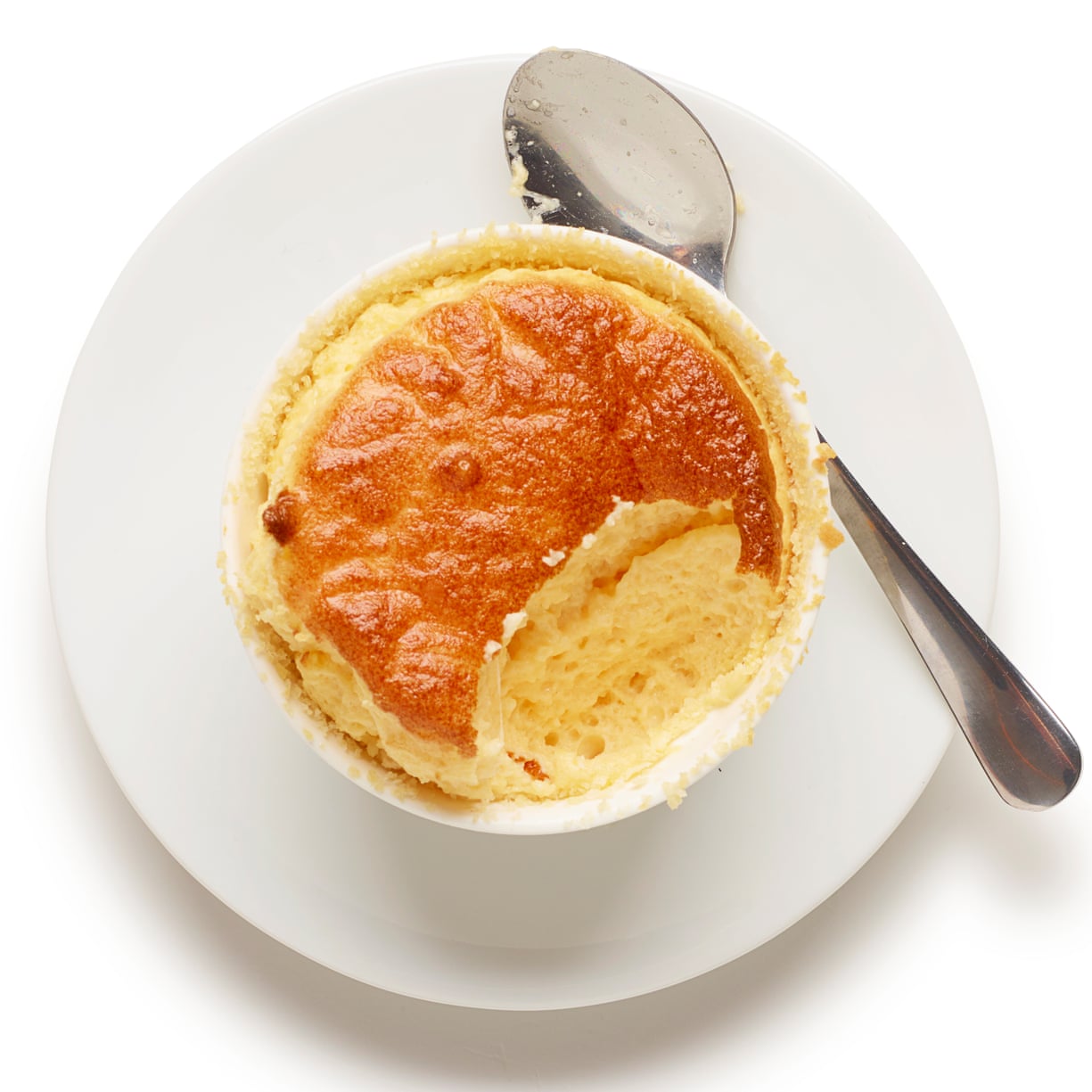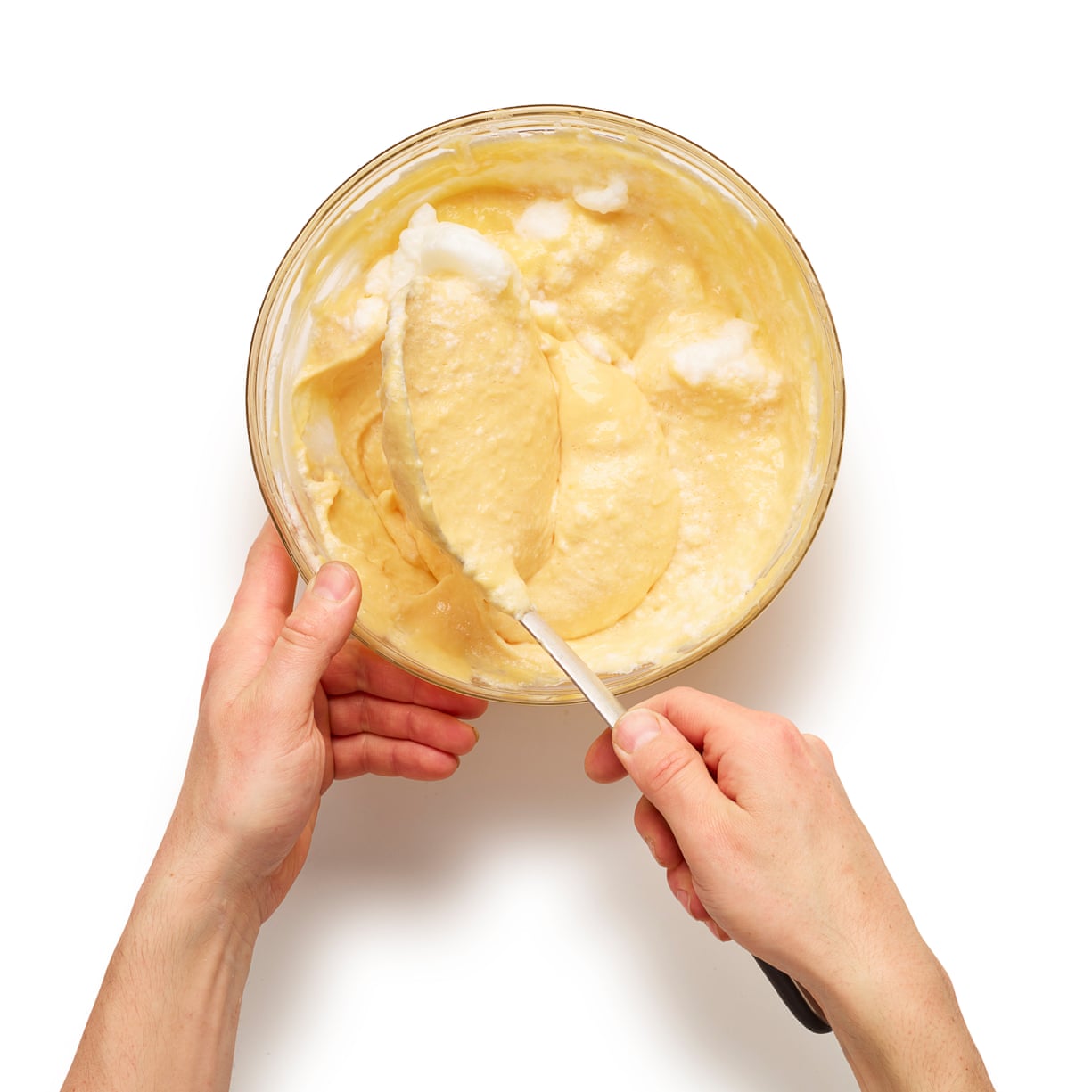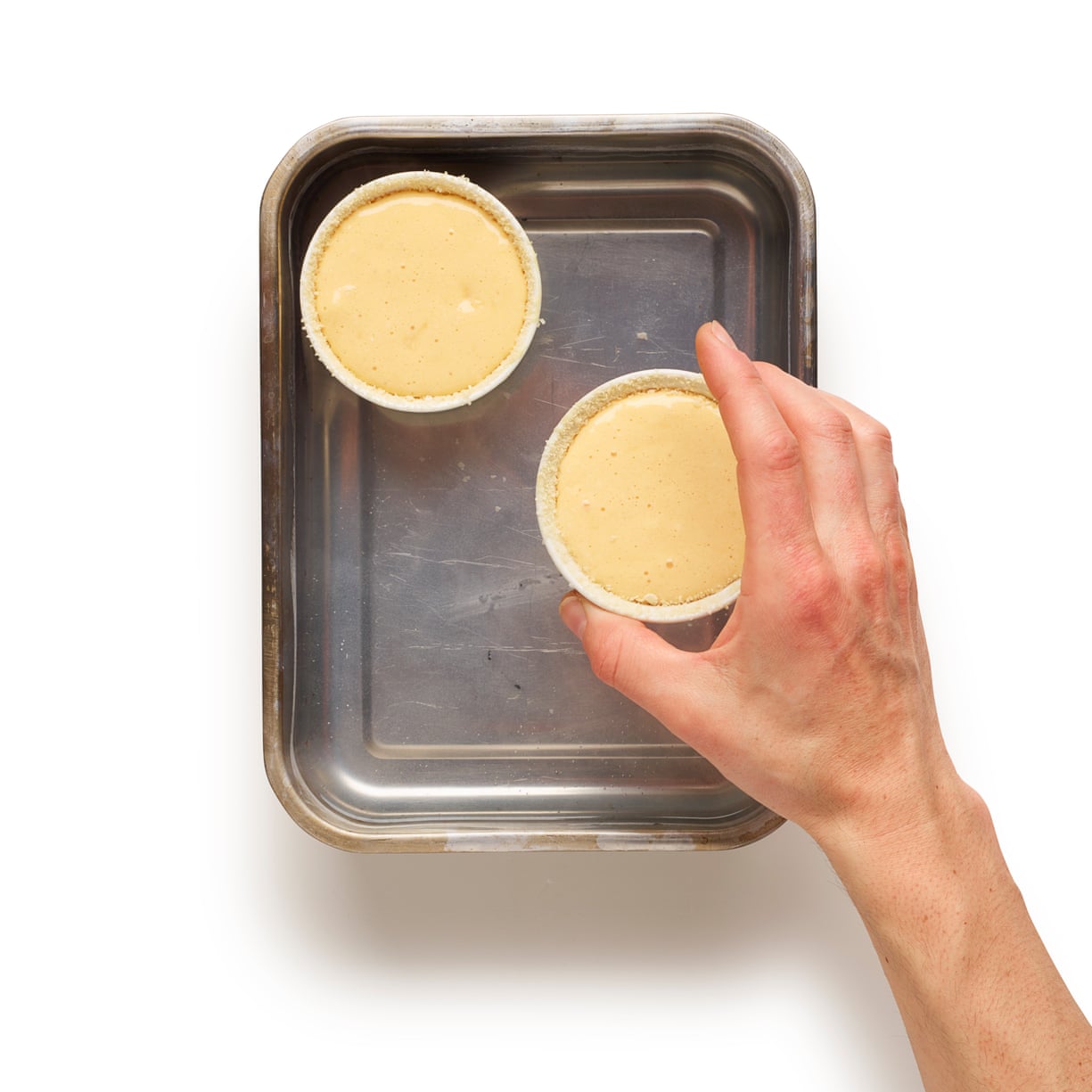How to make cheese soufflé – recipe
Once you know the science behind the magic, soufflés are one of the most versatile dishes you can have in your repertoire

Not so hard when you know how: Felicity Cloake's cheese soufflé. Photograph: Dan Matthews/The Guardian. Food styling: Jack Sargeson.
Soufflés have what you might call a bad reputation – which is strange, because, in actual fact, the effort-to-effect ratio is strongly skewed in the cook's favour. Once you know the science behind the magic, they're one of the most versatile dishes you can have in your repertoire: quick to make, a treat to eat and guaranteed to impress.
- Prep 30 min
- Cook 12 min
- Serves 6
- 40g butter, plus extra for greasing
- 20g fine white breadcrumbs
- 40g plain flour
- 300ml whole milk
- 4 large eggs
- ½ tsp English mustard powder
- 100g gruyère, finely grated
- 50g parmesan, finely grated
- Salt and pepper
1 Prepare the moulds
Heat the oven to 200C (180C fan)/390F/gas 6 and boil the kettle. Melt or soften a little of the extra butter and use it thoroughly to coat six small, straight-sided, ovenproof ramekins or similar.

Grease the ramekins with melted butter, then add breadcrumbs and turn to coat the insides. Photographs by Dan Matthews for the Guardian.
Put a spoonful of breadcrumbs in one ramekin, and turn to coat the inside all the way up the sides, holding it over a second ramekin to catch any excess, then repeat and refrigerate.
2 Start the white sauce
The soufflé base here is a simple white sauce, so melt the butter in a medium saucepan over a moderate heat, then stir in the flour. Keep cooking and stirring for a couple of minutes, until the mixture starts to smell toasty, but don't let it take on any colour. Gradually whisk in the milk until you have a smooth paste.

Make a standard roux by melting together flour and butter, then whisk in the milk bit by bit and cook until thick.
3 Finish the sauce, then cool
Heat gently, stirring regularly, until the sauce comes to a boil, then turn down the heat and simmer, stirring, until it has thickened to a béchamel-like consistency, but is still pourable. Tip into a large bowl and set aside to cool slightly; it needs to be hot enough to melt cheese, but not so hot it cooks the egg yolks.
4 Prepare a bain-marie
Half-fill a roasting tin with boiling water and put it in the oven – this bain-marie will insulate the soufflé mixture from the intense heat of the oven, and keep the texture soft and custardy, rather than tough and chewy. Separate the eggs, and put the whites in a fresh bowl that's large enough to accommodate some vigorous whisking.

Mix the white sauce with the cheeses and mustard, then add the egg yolks and combine.
5 Add cheese, egg yolks and mustard
Stir the mustard powder, three-quarters of the grated gruyère and all the parmesan into the still-warm white sauce. Season and mix until the cheese has melted into a fairly smooth sauce, then add the egg yolks one by one. Finally, add the rest of the gruyère, mixing to distribute it evenly – don't worry about it melting this time.6 Whisk the egg whites
Whisk the egg whites with a pinch of salt until stiff, but not dry or grainy: it's the air in the whites that expands in the heat of the oven, helping the soufflé to rise, so get as much in there as possible, and try not to knock too much out in the next stage.

Stir a couple of spoons of whipped egg white into the mix, to loosen it a little, then fold in the rest, taking care not to knock out too much air while doing so.
7 Fold in the egg whites
Stir a couple of spoonfuls of the egg whites into the cheese sauce to loosen it, then very slowly and gently fold in the rest of the egg whites with a large metal spoon or spatula.8 Bake
Divide between the ramekins, filling them just shy of the top, then put them in the bain-marie and bake for eight to 12 minutes, until risen and golden, but still wobbly in the centre. Serve immediately.

Fill the moulds with souffle mix, put in a bain-marie (a tray half-filled with water).
9 Variations
Feel free to substitute cheeses of your choice for the classic gruyère and parmesan combo, or stir some finely chopped ham or flaked salmon, sauteed mushrooms, blanched and chopped asparagus, spinach, fresh chives, watercress or spring onions, or a good pinch of smoked paprika into the base, if you like – just avoid anything too wet.

Bake for eight to 12 minutes, until risen and golden.
10 And how to prepare ahead …
Though you'll get the very best results with freshly beaten egg whites, you can make up to the end of step 5 in advance – and, to be honest, you'll still end up with pretty decent soufflés if you make it all, cover the filled ramekins and put them in the fridge for a couple of hours before baking. Told you they were easy.